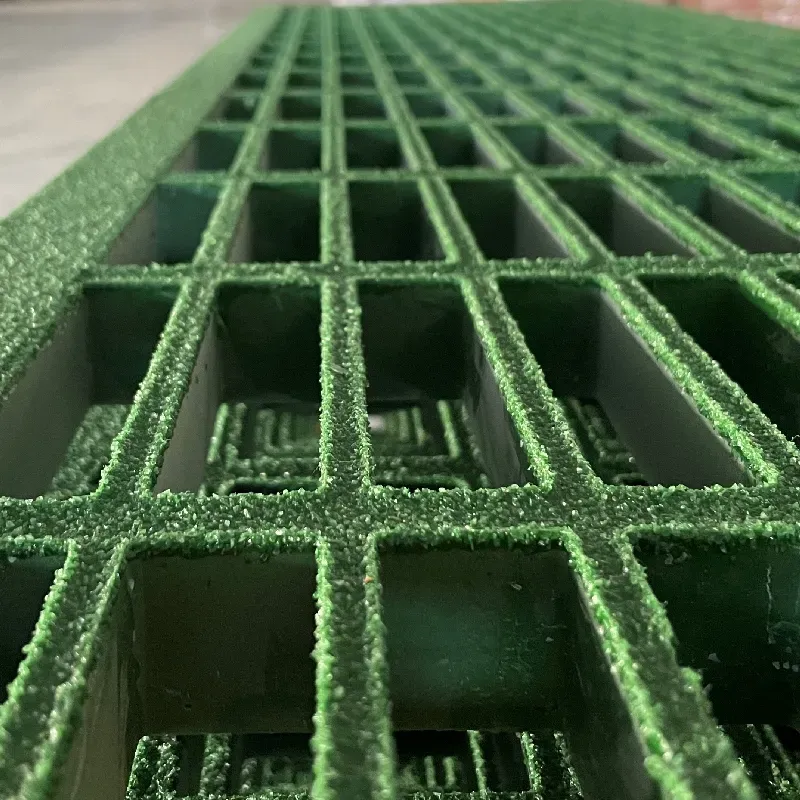loading...
- No. 9, Xingyuan South Street, Dongwaihuan Road, Zaoqiang County, Hengshui, Hebei, China
- admin@zjcomposites.com
- +86 15097380338
- Welcome to visit our website!
Understanding the Benefits and Applications of FRP Decking in Modern Construction Projects
Understanding FRP Decking A Modern Solution for Outdoor Spaces
In recent years, the demand for durable and low-maintenance materials in construction and landscaping has grown significantly. Among these solutions, Fiber-Reinforced Polymer (FRP) decking has emerged as a popular choice for homeowners and builders alike. This innovative material not only enhances aesthetic appeal but also offers several benefits that traditional decking materials cannot match.
What is FRP Decking?
FRP decking is made from a composite material that combines a polymer matrix with reinforcing fibers, often glass or carbon. This combination creates a lightweight yet incredibly strong material that can withstand harsh environmental conditions. FRP decking is typically available in various colors and textures, allowing homeowners to customize their outdoor spaces to their preferences.
Durability and Longevity
One of the key advantages of FRP decking is its superior durability. Unlike traditional wood decking, FRP is resistant to rot, mold, and pests such as termites, which can cause significant damage to wooden structures. This inherent resistance leads to a longer lifespan—often exceeding 25 years—making FRP decking a cost-effective long-term investment.
Furthermore, FRP decking does not warp, splinter, or crack as wood does. Its ability to maintain structural integrity in varying weather conditions makes it an ideal choice for regions with extreme temperatures, heavy rainfall, or high humidity.
Low Maintenance Requirements
Homeowners are increasingly conscious of the maintenance demands of outdoor spaces. Wood decking often requires regular staining, sealing, and painting to preserve its appearance and prevent deterioration. In contrast, FRP decking requires minimal maintenance. A simple wash with soap and water is usually sufficient to keep it looking fresh and vibrant.
frp decking

This low-maintenance characteristic not only saves time and effort for homeowners but also contributes to the eco-friendliness of FRP decking. By reducing the need for chemical treatments and frequent replacements, FRP decking supports a more sustainable approach to outdoor design.
Safety Features
Safety is another vital aspect to consider when choosing decking materials. FRP decking is inherently slip-resistant, making it a safer option for wet environments like pool areas and outdoor showers. Many FRP products come with a textured surface that enhances traction, helping to prevent slips and falls.
Additionally, FRP decking is non-combustible, which adds a layer of safety in wildfire-prone areas. This feature allows homeowners to enjoy their outdoor spaces with added peace of mind.
Environmental Considerations
As environmental awareness increases, many consumers are looking for eco-friendly products in their building materials. FRP decking can be manufactured using recycled materials, and its long lifespan contributes to a reduced environmental footprint over time. Moreover, the absence of toxic chemicals in its maintenance makes it a safer choice for both the environment and human health.
Conclusion
In conclusion, FRP decking presents a modern and efficient alternative to traditional decking materials. Its durability, low maintenance, safety features, and environmental benefits make it a compelling choice for both residential and commercial applications. Whether you're upgrading an existing deck or designing a new outdoor space, FRP decking offers a perfect blend of functionality and aesthetics, allowing homeowners to create beautiful, lasting outdoor environments. With its growing popularity, it's clear that FRP decking is here to stay, reshaping the landscape of outdoor living for the better.
-
Premium FRP Handrail for All ApplicationsNewsAug.29,2025
-
Low Maintenance FRP Mini Mesh Grating ProductsNewsAug.29,2025
-
Innovative FRP Square Tubes for Modern Industrial SolutionsNewsAug.29,2025
-
FRP Water Storage Tanks Wholesale Solutions for Bulk BuyersNewsAug.29,2025
-
FRP Molded Grating Solutions for Diverse Industrial ApplicationsNewsAug.29,2025
-
Construction Advancements Through FRP Pultruded ProfilesNewsAug.29,2025
-
Why Choose FRP Railings, Guardrails, and Handrail Systems?NewsAug.29,2025
